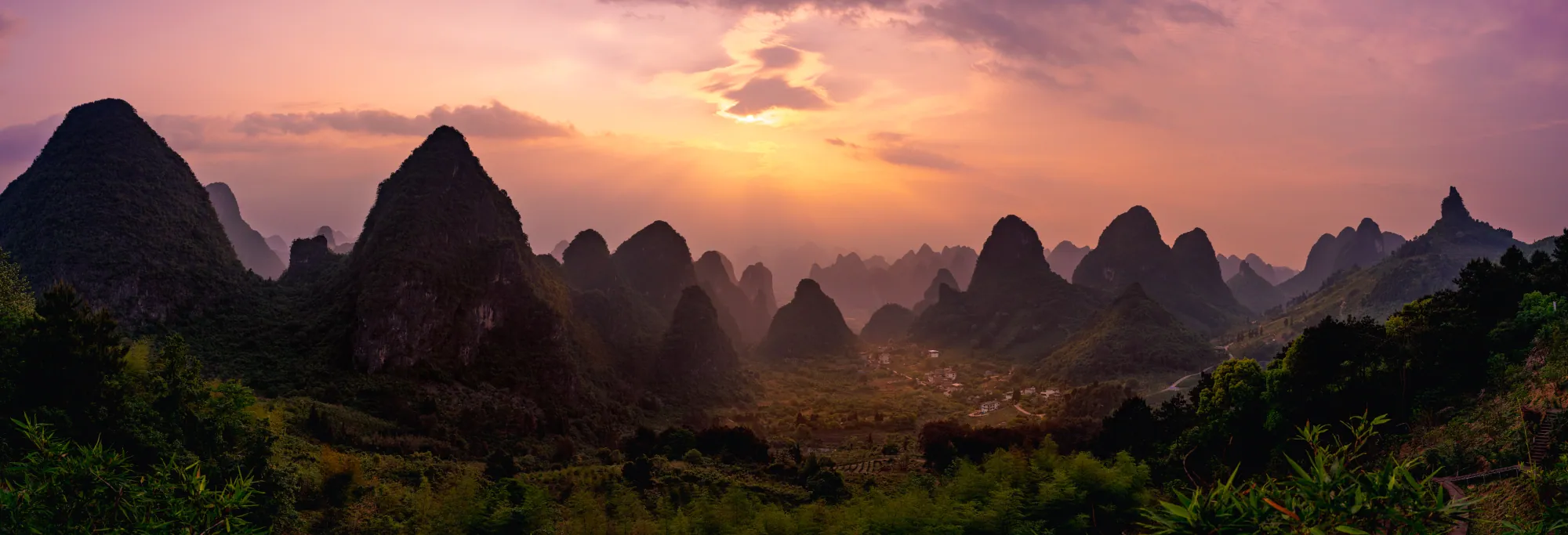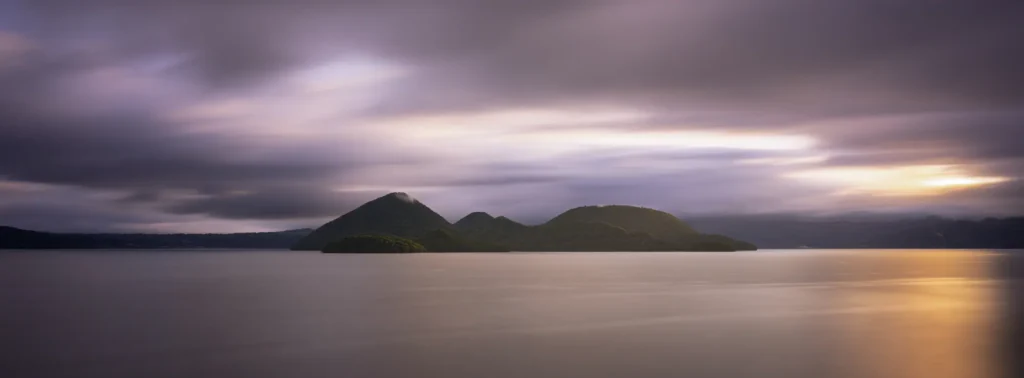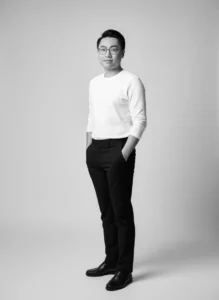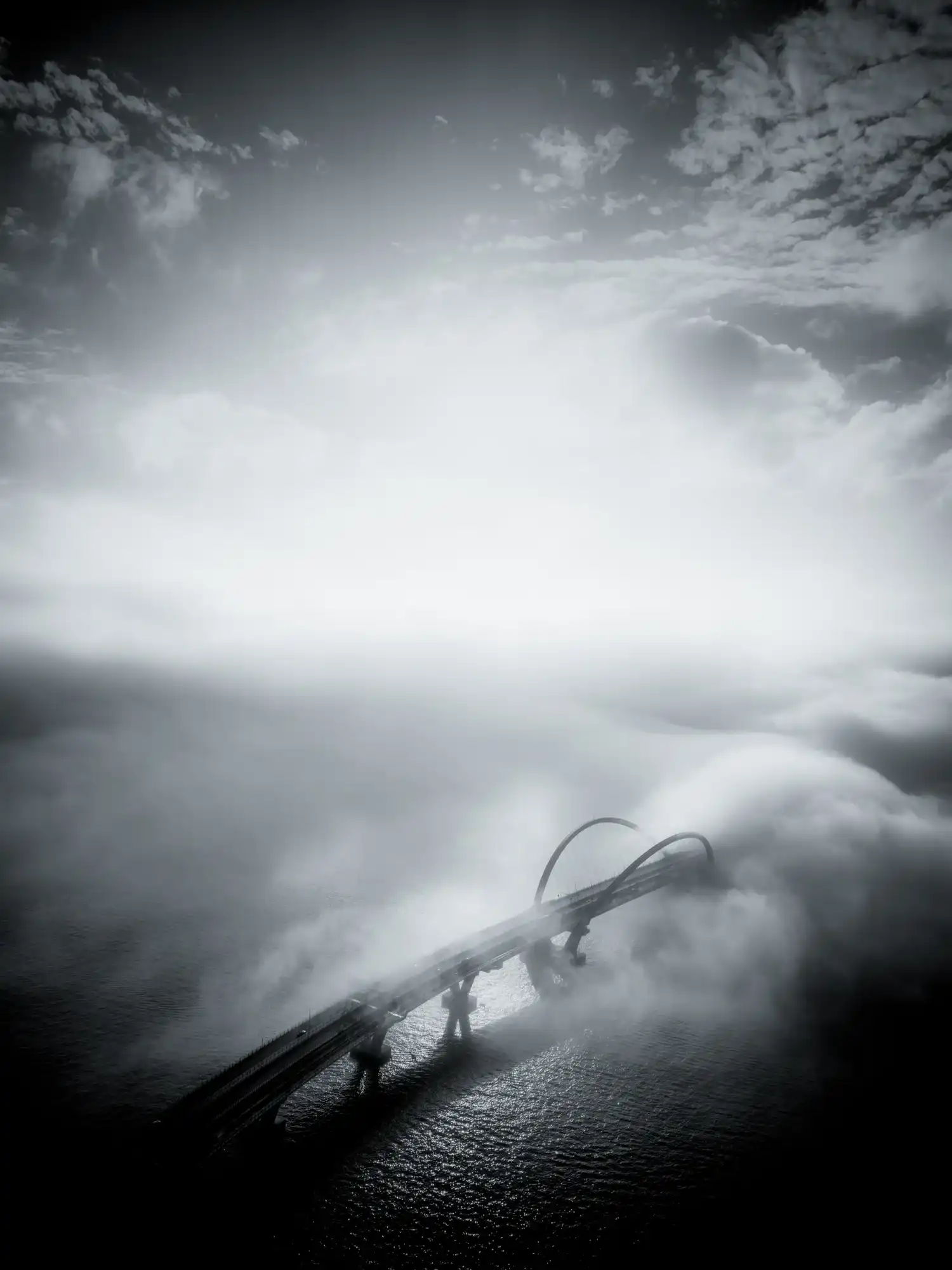Frank Chan’s Icon: The Village, Guilin was awarded first place in Grid Photo Gallery’s 2025 Landscape contest. In the image, a golden dawn illuminates a quiet village nestled among Guilin’s dramatic karst peaks, a fleeting harmony of human settlement and vast natural forms.
Selected from a wide field of submissions, the work stood out for its meticulous composition, patience in pursuit of the right light, and the serenity it conveys—a vision of coexistence between people and the landscapes they inhabit.
In this interview, Frank speaks with us about the long path that led him back to fine art photography, the craft and persistence behind the winning image, and the broader vision shaping his Icon series.

Q: Frank, congratulations on your win! To begin, could you tell our readers a little about yourself and how you first became interested in photography?
A: My interest in photography began when I was seven years old on a family trip to Japan. I had a simple film camera and unknowingly created a panning photograph of a train in motion, sharp against a blurred background. It was unlike anything we can see with the naked eye, and that moment opened my curiosity for the medium.
I became more devoted when cameras arrived on mobile phones during the Nokia era. The reduced cost and instant results of digital photography allowed me, and many others, to weave photography into daily life.
Although I am a banking executive by profession, I pursued photography alongside my career. I freelanced with one of Hong Kong’s leading wedding studios, founded a newborn studio ranked among the city’s top ten, and built a commercial photography practice serving international lifestyle, fashion, and hospitality brands. Eventually, the intensity led me to step away for nearly a decade. Returning now, I focus solely on fine art, with a commitment to artistic expression and freedom.
“Tranquility remains the thread that ties all my work together.”
Q: Your winning work, Icon: The Village, Guilin, is both majestic and serene. What first drew you to this particular landscape and moment?
A: Every work in the Icon series is carefully planned through research and dedicated travel. Guilin is celebrated for its dramatic karst mountains, but I wanted more than a pure landscape. Including the small village within the scene creates a dialogue between human presence and the grandeur of nature. That contrast was what first drew me to the moment.
Q: The photograph captures a delicate balance of human settlement and vast natural forms. What emotions or ideas were you hoping to communicate through this harmony?
A: The photograph is meant to evoke tranquility, almost like an Eden hidden within the wonders of nature. By placing the settlement in harmony with the surrounding peaks, I wanted to reflect a vision of coexistence, life lived quietly in balance, away from the intensity of urban chaos.
Q: Light seems central to the atmosphere of the image. How did you anticipate or respond to the fleeting conditions of clouds and golden illumination that day?
A: Light was the defining element of the work. I spent two days observing the shifts in atmosphere and chose sunrise for its pastel sky and the way a single patch of light touched the village. Guilin’s weather is famously unpredictable, and on that morning I waited for three hours, adjusting exposures constantly until the clouds finally parted. Persistence allowed me to capture that fleeting illumination.
Q: The image is part of your larger Icon series. What inspired you to create this series, and how does the Guilin work fit within its broader vision?
A: The Icon series is about re-imagining landmarks through my own vision, capturing the world’s most iconic scenes in the way I believe they can look at their best, often infused with tranquility and a touch of surrealism. The series began with Victoria Harbour in Hong Kong, originally a commissioned piece. Because it’s one of the most photographed skylines in the world, I had to rethink both artistic and technical approaches to create something new. That challenge became the spark for the series, pushing me to re-envision other iconic places through my own lens.
Guilin naturally belongs within this vision. It is often regarded as the most beautiful landscape in China, defined by its dramatic karst mountains. Including it in the Icon series feels essential, as it embodies both cultural significance and the timeless harmony between nature and human presence.
Q: You used a Hasselblad X2D 100C with a 28mm lens for this piece. What guided your choice of camera system and lens for such panoramic storytelling?
A: Growing up, Hasselblad was always my dream system. Beyond the sentimental value, it provides exceptional detail, depth, and tonal range, giving me the flexibility to fully express my artistic vision. The 28mm lens is my favorite in the X system because it is light, compact, and versatile enough to handle a wide range of scenarios while never compromising on image quality. a huge help.
Q: Working in dynamic outdoor conditions can be challenging. What technical or environmental hurdles did you encounter in capturing this scene, and how did you overcome them?
A: Luck plays a big role in outdoor photography, especially during travel when time and opportunities are limited. On this trip, it was the only morning in an entire week that offered a true golden sunrise. The greatest challenge was waiting for the right light and then acting quickly, knowing it would disappear within minutes. Preparation and patience allowed me to be ready when that brief window arrived.
Q: On the craft side, how do you approach exposure decisions when dealing with strong contrasts between shadowed valleys and radiant skies?
A: The extreme contrast between the radiant sky and the shadowed valleys was a challenge. I made a deliberate choice to expose for the sky in order to preserve its detail, trusting that the Hasselblad system would still capture enough information in the darker areas of the mountains. In post, I applied only slight adjustments to lift the shadows. My intention was never to flatten the scene but to preserve the natural contrast, with the focus on the sky and the village illuminated beneath it.

Q: Turning to the contest itself—what motivated you to submit to Grid Photo Gallery, and what does this recognition mean for you personally and professionally?
A: Photography today is both highly democratized and yet often undervalued compared with mediums like painting or sculpture, especially in major art events such as Art Basel. That is why I truly appreciate the mission of Grid Photo Gallery, which provides photographers with a dedicated platform to share their work and passion. Communities grow through participation, and supporting platforms like this helps strengthen the ecosystem for photography as fine art.
Winning the 2025 Landscape was a very meaningful surprise. It affirms my path, and gives me the encouragement to keep going on a journey that, as many artists know, requires persistence, experimentation, and resilience.
Q: As the exhibition unfolds in a digital space, how do you feel about viewers encountering your work online rather than in a physical gallery?
A: Physical prints carry a texture and depth that no screen can replicate. At the same time, digital exhibitions extend accessibility, removing the limitations of time and place. Each form offers a unique way of experiencing the work, and both are important to me as an artist.
“The most important thing is to keep shooting, follow what naturally draws your attention.”
Q: Many emerging photographers look up to artists like you. What advice would you give them about cultivating patience and vision in the field?
A: If you already know your niche, that is wonderful. If you do not, there is no need to label yourself too early as a street, landscape, wildlife or [insert genre here] photographer. The most important thing is to keep shooting, follow what naturally draws your attention. Over time, patterns will emerge, and you will start to understand both yourself and your style more clearly. Your niche may change as you grow, so embrace that evolution. Above all, focus on what makes you happy behind the camera.
Q: Finally, what projects or directions are you most excited to explore next, and how do you see your landscape work evolving in the coming years?
A: I have not labeled myself strictly as a landscape photographer, but I will continue expanding the Icon series globally, exploring how different cultures and geographies can be distilled into moments of stillness. At the same time, I want to keep developing my long exposure, panoramic style across other series, with tranquility remaining the thread that ties all my work together.
For anyone interested in following the journey, you can find me on Instagram at @monomino_studio or through my website www.frankchan.gallery.
Some photographs by Frank Chan

Icon- Lake Toya & Mount Yotei, Hokkaido – Frank Chan 
Icon- Victoria Harbor, Hong Kong – Frank Chan 
Genesis, Eden & Adams – Frank Chan



